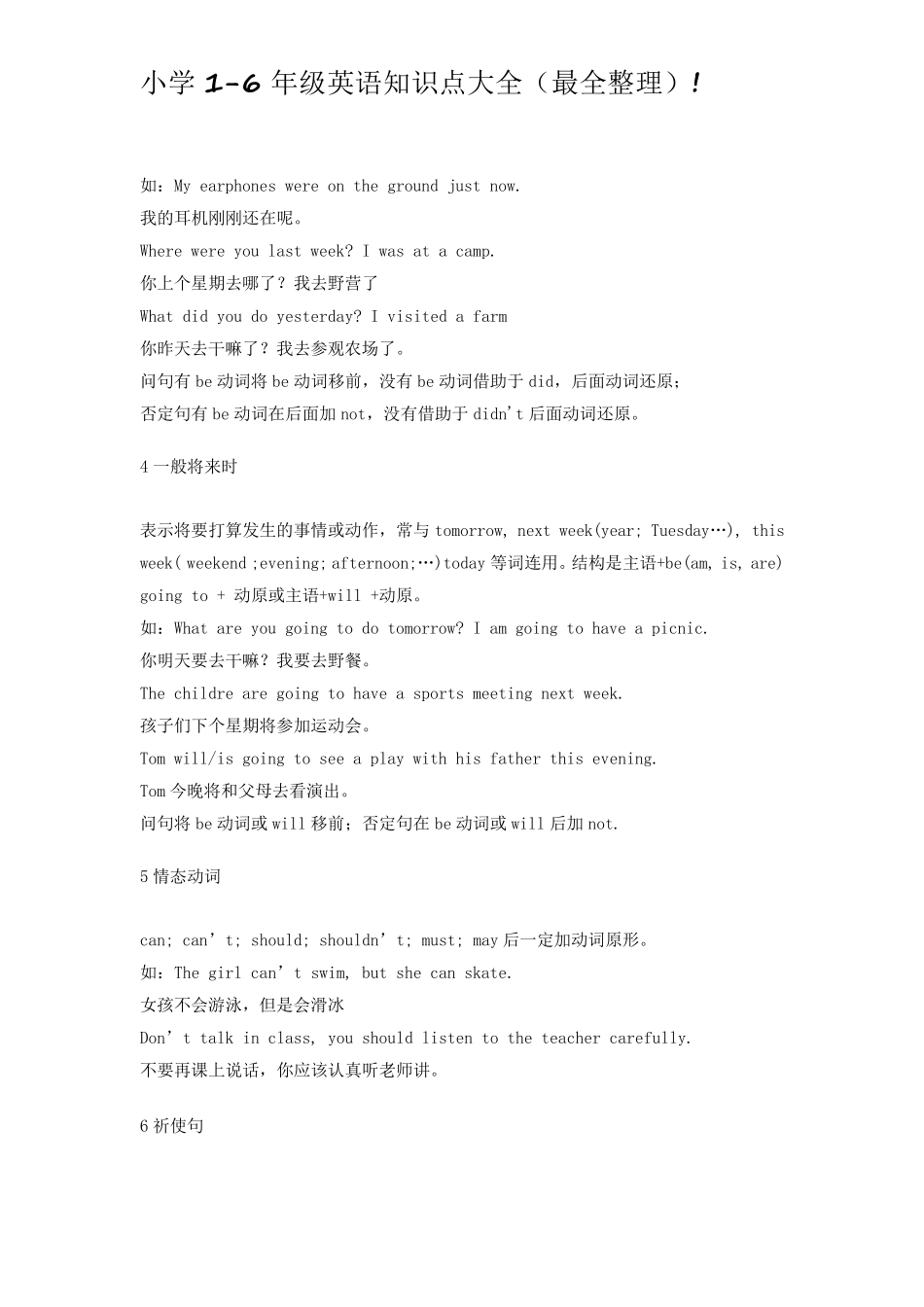小学1-6 年级英语知识点大全(最全整理)! 1 现在进行时 表示正在发生的事情或进行的动作,常与now,listen,look 等词连用,结构是主语+be动词(am, is, are)+动词ing. 如:It is raining now. 外面正在下雨 It is six o’clock now. 现在6 点了 My parents are reading newspapers in the sitting room. 我父母正在客厅看报纸 Look! The children are having a running race now. 看!孩子们正在赛跑 问句将 be 动词移前,否定句在be 动词后+not. 2 一般现在时 表示经常反复发生的事情或动作,常与often, usually, sometimes, always, every day(week year…) on Sundays 等词连用。 结构是主语+动词原形;当主语为第三人称单数即 he,she, it, Tom, my mother, the boy等词时,动词后加 s 或es. 如:We have an English lesson every day. 我们每天都要上英语课 Do the boys run faster than the girls? Yes, they do. 男孩比女孩跑的快吗?是的 问句借助于 do, does 否定句借助于 don’t, doesn’t,后面动词一定要还原。 3 一般过去时 表示发生在过去的事情或存在的状态,常与just now; a moment ago; … ago; yesterday; last ( week; month; year; Monday; weekend); this morning 等词连用。 结构是主语+be 动词的过去式(was; were)或主语+动词的过去式。 注意:be 动词与动词过去式不可同时使用。 小学1-6 年级英语知识点大全(最全整理)! 如:My earphones were on the ground just now. 我的耳机刚刚还在呢。 Where were you last week? I was at a camp. 你上个星期去哪了?我去野营了 What did you do yesterday? I visited a farm 你昨天去干嘛了?我去参观农场了。 问句有be 动词将be 动词移前,没有be 动词借助于did,后面动词还原; 否定句有be 动词在后面加not,没有借助于didn't 后面动词还原。 4 一般将来时 表示将要打算发生的事情或动作,常与tomorrow, next week(year; Tuesday…), this week( weekend ;evening; afternoon;…)today 等词连用。结构是主语+be(am, is, are) going to + 动原或主语+will +动原。 如:What are you going to do tomorrow? I am going to have a picnic. 你明天要去干嘛?我要去野餐。 The...


